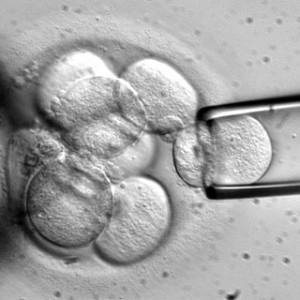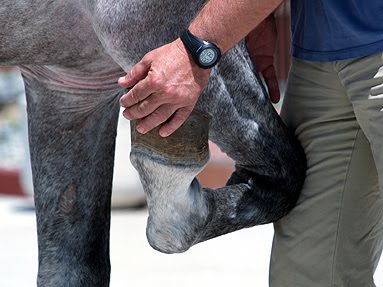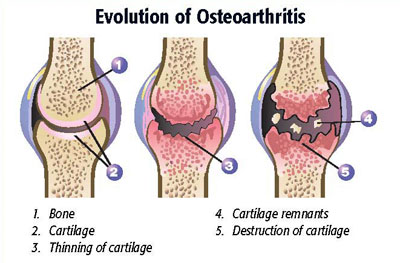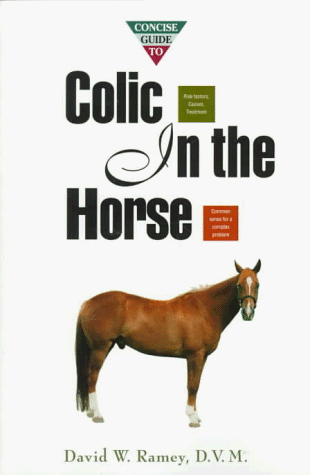 If you’ve been paying attention to the medical news lately, you probably know that stem cells are all the rage. They have the “potential” to cure just about anything – they are being injected into joints, tendons, and ligaments, and even feet, in hopes that they will speed and improve healing. I will confess to not using stem cells, and in fact, I’m very skeptical about them, especially as they are being used in horses.
If you’ve been paying attention to the medical news lately, you probably know that stem cells are all the rage. They have the “potential” to cure just about anything – they are being injected into joints, tendons, and ligaments, and even feet, in hopes that they will speed and improve healing. I will confess to not using stem cells, and in fact, I’m very skeptical about them, especially as they are being used in horses.
The idea behind stem cells is that they are supposed to be able to come whatever we want them to be. It’s almost like magic. In the earliest fetal tissues, you can’t tell a bone cell from a liver cell from a skin cell – these cells differentiate into specialized cells as the fetus develops. It’s apparently hoped that if stem cells – cells that haven’t yet become a particular cell – are implanted into injured or diseased tissues, they can convert into whatever type of tissue is needed, say, tendon cells in an injured tendon, or cartilage cells in an injured joint.
Unfortunately, they don’t work like that.
Currently, in human medicine, the uses for stem cells are largely experimental. Sure, they offer some promise, but the fact is that there are exactly ZERO indications for stem cells in orthopedics (the branch of medicine that’s concerned with disorders of things like bones, joints, and tendons). Yet veterinarians (and the companies that supply stem cells) are telling folks that they are easy to harvest, and can be injected almost anywhere that there’s a problem, especially in injured tendons, ligaments, and joints. I personally don’t think that it’s necessarily appropriate to do something just because you can.
Still, there are some nagging facts that make me less than impressed with the numerous claims. First and foremost is that the tissues that stem cells are supposed to help – tendons, ligaments, and joints – heal very slowly. The tissues have a very poor blood supply, relative to other tissues. In fact, you wonder how long cells injected into such tissues could live.
As it turns out that, mostly, they don’t. Research from 2010, published in the prestigious Equine Veterinary Journal, shows that less than 5% of the cells that are currently harvested and injected back into horses (mesenchymal stem cells) survive 10 days. It’s hard to imagine how dead stem cells could do any good for healing tissues. CLICK HERE to read an abstract of the study.
Then there’s the fact that stem cells don’t just magically become what we want them to become. They are profoundly influenced by the environment into which they are placed. So, if you drop stem cells into an inflamed area – an area sort of like, say, just about any place that stem cells are currently being injected – they are just as likely to become inflammatory cells (assuming they live) as they are anything else. Wishing don’t make it so, folks.
Honestly, I think it’s usually best to get information from places that aren’t selling the products that they are touting. When it comes to stem cells, those who are still reading might be interested in a site sponsored by the International Society for Stem Cell Research (ISSCR).
The ISSCR is made up of a bunch of sober-minded researchers who are actually trying to see if stem cells have therapeutic value before injecting them into people.
NOTE: I know this idea sounds nuts. Much better to just make promises, charge money, and go about injecting, right? After all, it is the “latest” thing (this year, anyway).
The ISSCR has launched a closer look at STEM CELL treatments with information geared to help consumers make rational decisions about stem cell treatment. CLICK HERE to take a look.
While the site is about human stem cell treatments, it contains a handbook of basic information that includes questions that consumers should ask a prospective clinic and discuss with a trustworthy physician. Those same questions should be directed at a veterinarian who proposes stem cell treatments for your horse. There’s absolutely no reason at all you should spend thousands of dollars to try to get an injured tendon to heal by injecting it with stem cells, especially since the healing may not be better, or faster.
There is currently a lack of good information that shows that if you inject stem cells into your horse, the healing will be any faster, better, more colorful, or stronger, when compared to when injured tissues are treated with rest alone. Yes, there is certainly a need for good treatments to assist injured joints and tendons with healing. However, there’s currently very little reason to believe that injecting stem cells is one of them.
HERE’S SOME MORE READING –
7/22/11 – STEM CELLS UNLIKELY TO HELP OSTEOARTHRITIC JOINTS. CLICK HERE for more information.
9/6/11 – FOR INJURED ATHLETES, FEW PROVEN TREATMENTS. CLICK HERE for an article from the New York Times.









